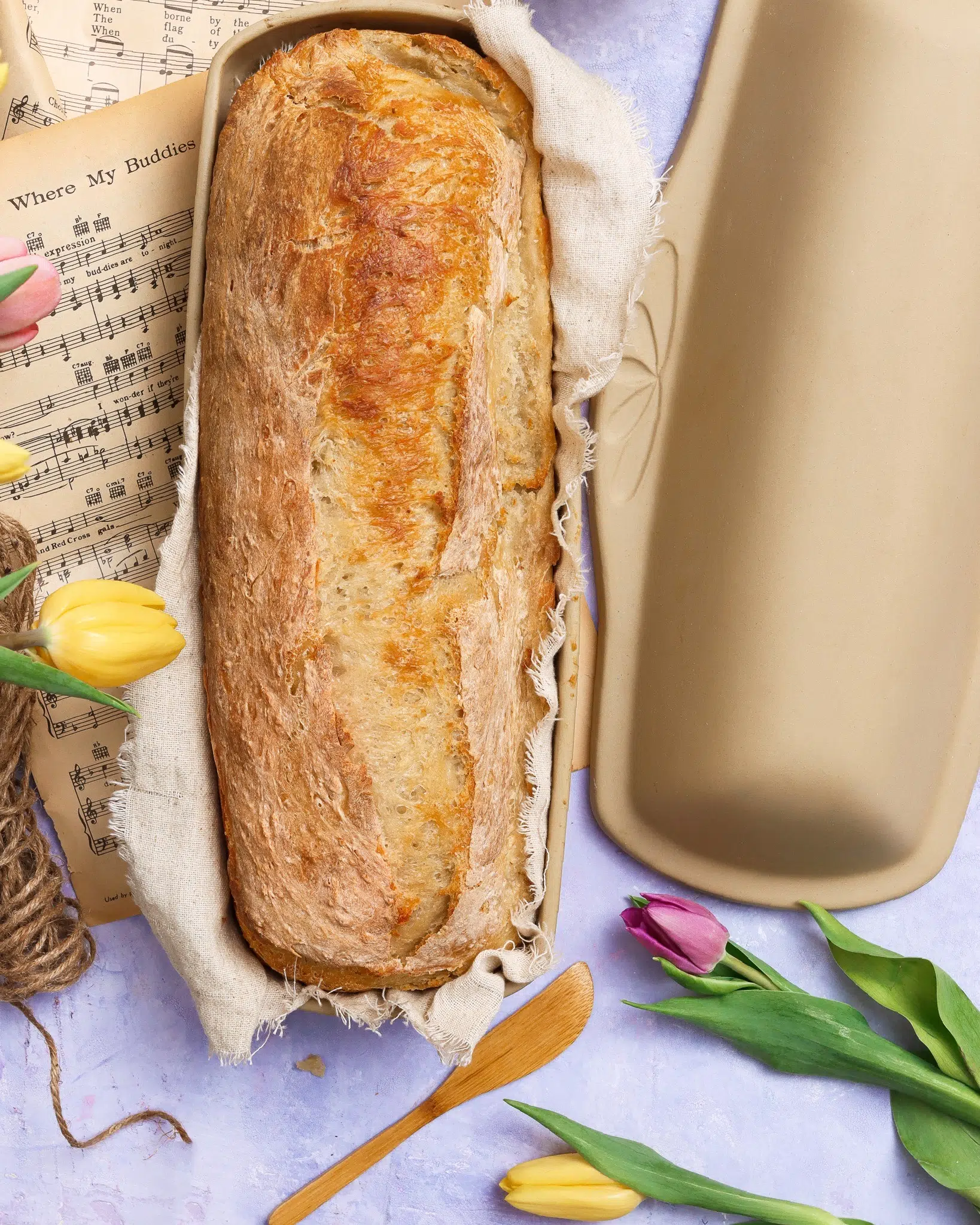Eating from lead free dishes assures us we are getting lead-free and cadmium free food. While lead is a substance that is found in soil and in the environment, the human body—especially children—can only take but so much.
Lead is a toxic substance that is found, in small amounts, in our environment through dust, dirt, drinking water and food. It makes its way into food products because the lead in the soil can be deposited or absorbed by plants, including those that grow our food. Lead that gets in or on a plant can’t always be removed by washing or processing the food so, as a result, trace amounts can still be ingested into our systems.
Over the last few decades, the Food and Drug Administration (FDA) has performed ongoing studies of over 8,800 foods—88% of those foods contain a less than traceable level of lead.
Where else can you find lead?
One exposure one time isn’t going to cause lead poisoning or pose any significant threat. However, repeated exposures over time from multiple sources could cause a threat, especially to young children because their brains and organs are still developing, as well as women who are nursing or pregnant. Some common sources of lead, other than food, are:
Paint
Lead used to be added to interior and exterior paint leading up to 1978 when it was officially banned by the US. If you have a home that is older than 1978, it could contain lead. This likely won’t pose a significant threat to you, unless the paint is chipping away or flaking off. Most lead poisoning in children occurs from them eating lead-based paint chips that have fallen away onto the floor.
Furthermore, homes that have lead-based paint on the walls, doors, and window frames often have dust that’s contaminated with lead (and, really, who doesn’t have dust in their home?).
Lead was also often used to paint children’s toys and household furniture. If you’re a lover of vintage or antique household finds, consider doing a bit of research before you bring something home to your family.
Water Pipes
Even if the water isn’t contaminated with lead, it’s possible that the pipes and plumbing fixtures may be. Many homes’ fixtures have been soldered with lead and could cause that lead to be released into the tap water.
If the pipes have corroded, the risk is high that lead could be sneaking into your water supply. In areas where the water has high acidity or low mineral content, that water can often aid in the corrosion of the pipes, effectively speeding up the process.
The Safe Drinking Water Act (SDWA) has reduced the maximum allowable lead content—content that is considered “lead-free”—to be weighted at an average of 0.25 percent calculated across the surfaces of pipes, pipe fittings, and fixtures, as well as 0.2 percent for solder and flux.
Makeup
The FDA regulates cosmetics under a law that was passed by Congress: The Federal Food, Drug and Cosmetic Act. The Federal Food, Drug and Cosmetic Act does not require cosmetic products or most ingredients to have FDA approval before they go to market. The only exception to this regulation is on cosmetics that contain color additives.
However, if a cosmetic product contains an ingredient or impurity that may make a product harmful to consumers when they use it, that product must be considered “adulterated” under the law. Misuse of color additives also makes a cosmetic adulterated. It is against the law to market an adulterated product.
Traditional eyeliner contains a substance called kohl, which poses a serious health concern because they commonly contain large amounts of lead, as well as other heavy metals. Products containing kohl and similar ingredients have been linked to lead poisoning and are not allowed to be sold in the United States. However, products do tend to make their way into specialty markets across the country.
Lead in Dishes
For most people, tableware alone does not pose a significant risk of lead exposure. Other sources of lead, such as lead in paint or soil, are much more likely to cause significant threats to our overall health. However, lead consumption or exposure over time can have damaging effects—especially to children and pregnant women.
Lead is often used in ceramic dishes for glazes and in decorations. When used in a glaze, lead gives a smooth, glass-like finish that allows bright colors and decorative patterns to shine through.
The lead is released from the glaze or decoration on the surface of the dish and passes into the food or drink in the dish in a process called leaching. When you eat the food, the lead gets into your body. While there is no average amount of lead that typically leaches from a dish into the body, the type of glazing, how the dish is used, what kind of food is put in it and how long food is left in the dish.
Dishes that typically contain lead are:
- Traditional glazed terracotta dishware
- Highly decorated traditional Asian dishware
- Homemade and hand-crafted tableware
- Bright colors or decorations on the inside of dish surfaces
- Decorations on top of a glaze instead of beneath it
- Antique tableware
- Corroded glaze, or a dusty or chalky gray residue on the glaze.
The FDA regulates the sale of tableware that contains lead, however, products that are sold as “lead safe” can still contain trace amounts of lead. At Emerson Creek Pottery, our dishware is safe, lead-safe and non-toxic. All glazes and substances used in the creation of our USA-made pottery are lead and cadmium safe and completely safe for your family.
Lead safe tableware contains some lead, but the amount of lead that can get into food does not exceed the California Proposition 65 standards. Either there is very little lead in the tableware or very little of the lead actually passes into food with use.
You can find out if your dishes meet Proposition 65 standards for lead if they are new or are still being sold by a major retail store. There are three ways to get this information:
- Ask the store where the dishes are sold if they meet Proposition 65 standards. At Emerson Creek Pottery, our dishes meet Proposition 65 standards.
- Find out from the manufacturer if the dishes meet Proposition 65 standards. At Emerson Creek Pottery, we manufacture our dishes with absolutely no lead or cadmium substances.
- The Environmental Defense Fund (EDF) published a brochure entitled What You Should Know About Lead in China Dishes, which provides a list of many dish patterns made by leading manufacturers in the United States. The brochure contains a list of businesses that are lead free and lead safe.






5 Responses
Really interesting post!
Are your dishes cadmium free as well.?
Thank you,
Robin
Hi Robin! Yes, our pottery is cadmium safe.
I have tried in vain to find the EDF brochure you reference , “What you should know about lead in China dishes”. Could you please provide a link to this document?
Hi Kimberly, this is actually an older brochure that isn’t available online. I’m going to reach out to the EDF so see if I can get a copy for you.